Planning a trip to Cusco is an exciting experience, but with so many must-see activities and places like Machu Picchu, the Sacred Valley, Humantay Lake, or the Rainbow Mountain, it can be hard to know where to start.
To make your visit as enjoyable as possible, it’s important to organize your itinerary in a balanced way, taking into account the difficulty of the activities and the time needed to acclimatize to the Andean environment.
In this blog, we give you the keys to creating a plan that allows you to enjoy Cusco’s incredible attractions without rushing, adapting to the pace of the city and the altitude of its beautiful mountains.
How to Organize Your Activities in Cusco
Cusco is one of the most important cities in Peru, as it boasts a great historical legacy, impressive monuments, and beautiful landscapes. There’s so much to do and discover: from exploring its colonial streets to hiking high mountains or visiting the enigmatic Inca ruins.
To choose the right activities and the best order to do them, it’s essential to consider three key factors:
- The altitude of each destination.
- Your physical condition and previous hiking experience.
- The total time you have available for the trip.
These aspects will make the difference between a pleasant and safe experience or an overly demanding itinerary that could affect your health or enjoyment. Plan well to make the most of your adventure in Cusco.
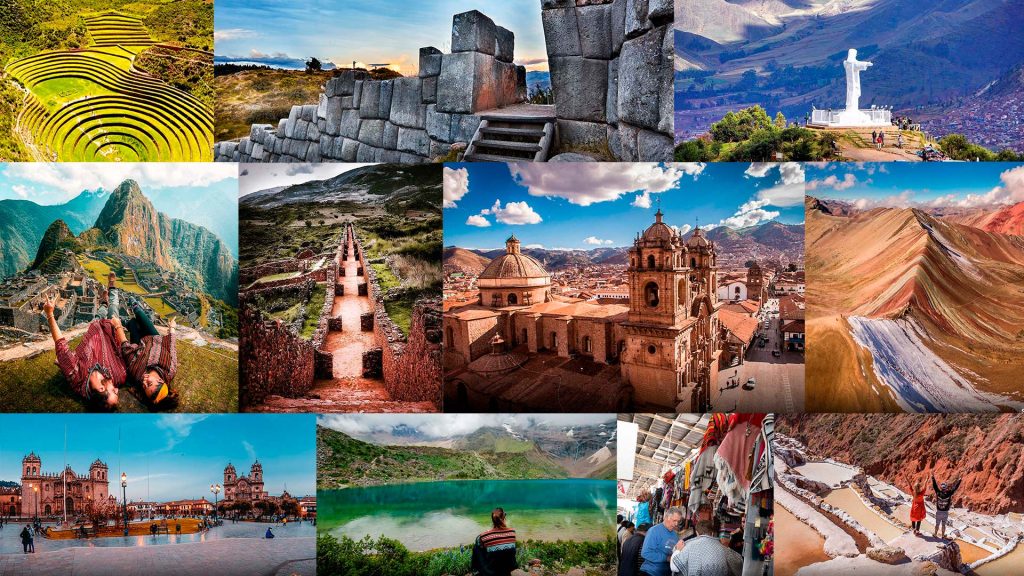
How Many Days Do I Need for a Trip to Cusco?
Although it’s possible to visit Cusco in just a few days, it’s recommended to allow more time to fully enjoy it without rushing and without risking altitude sickness or fatigue. Ideally, you should spend at least a week in the city, which will give you time to acclimatize and explore everything this fascinating place has to offer.
Spending more time on your trip to Cusco allows you to:
- More Time to Acclimatize: Cusco is located at an altitude of 3,399 meters (11,152 feet) above sea level. You need to give your body enough time to adapt to these conditions. Even if you are physically well-prepared, the altitude of the imperial city and the surrounding tourist destinations can affect you with symptoms like fatigue, headache, dizziness, or shortness of breath. That’s why it’s recommended to dedicate 1 or 2 days to acclimate and do gentler activities, allowing yourself to adjust and thus reduce the risk of altitude sickness.
- Deeper Exploration: You’ll be able to take your time enjoying Cusco without rushing, allowing for a much more complete experience. With a broad itinerary, you can thoroughly explore the main tourist attractions in the area, discovering both the famous spots and hidden gems that many hurried travelers miss.
- Better Adaptation to Hiking: It’s essential to gradually adapt to the pace of the hikes. Starting directly with a very demanding route is not advisable, even if you’ve trained beforehand. The Andes are a unique terrain, with altitude and conditions you won’t find elsewhere. That’s why it’s key to start slowly and organize your itinerary from easier to more difficult hikes, allowing you to get used to it and enjoy each experience to the fullest.
- Opportunity to Disconnect: A longer trip gives you the necessary time to relax and unwind. You’ll also have the chance to immerse yourself in the local culture, stroll peacefully through the streets, and see up close what life in Peru is like. Cusco is the perfect place to recharge and enjoy a unique experience of tranquility.
- Flexibility to Adjust the Plan: A longer trip gives you the freedom to adjust your itinerary as needed. If something doesn’t convince you or you get a new recommendation, you’ll have time to take a day off or change activities depending on the weather or how you feel physically. This flexibility allows you to enjoy the trip more calmly and without pressure.
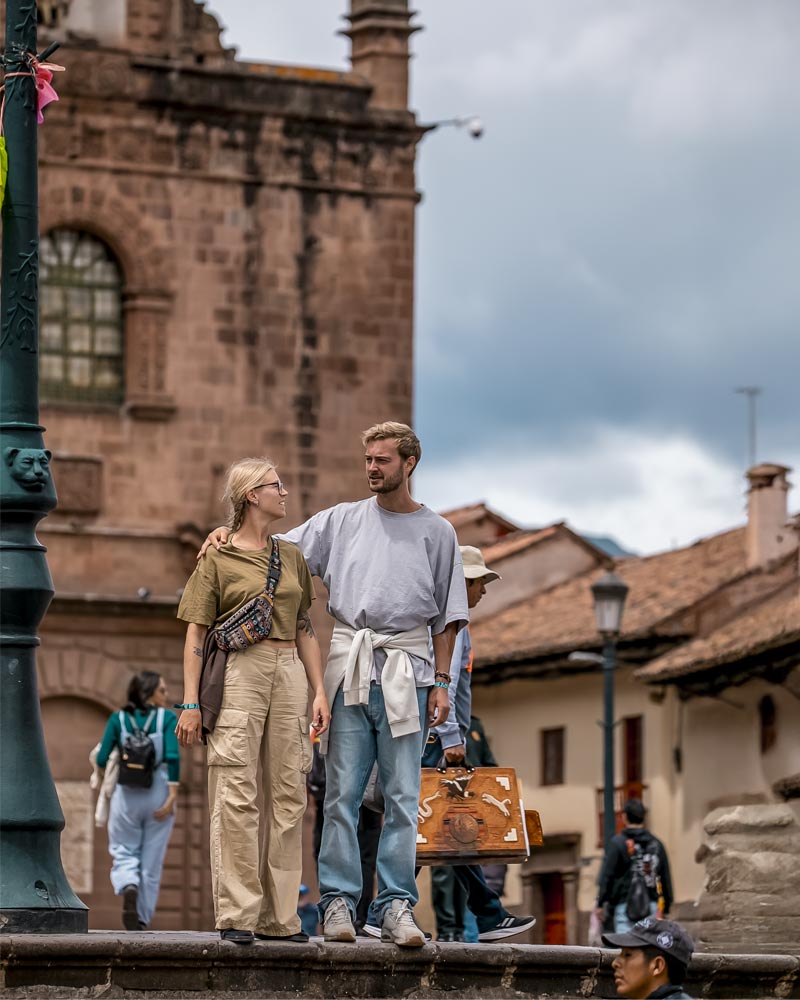

Difficulty Levels of the Routes in Cusco
Cusco offers routes for all types of travelers, from easy hikes—ideal for acclimatization—to challenging treks that require experience and excellent physical condition. At Salkantay Trekking, we’ve created a guide with the different difficulty levels to help you choose the option that best suits you.
- Easy
These activities are a walk in the park! They are light routes that let you enjoy the scenery, history, and surroundings with total ease. You don’t need any special training or equipment. The terrain is generally flat and comfortable. But don’t get overconfident! Any hike in Cusco requires prior acclimatization to the altitude, even the simplest ones. - Moderate
Before embarking on a “moderate” hike or tour, you should be reasonably acclimatized to the altitude of Cusco and the Andes. The altitude affects your oxygen levels, energy, and hydration, so it’s essential to get used to it to avoid dizziness, headaches, or breathing problems on these routes.
These hikes are manageable if you are in good physical shape. The terrain often includes uphill and downhill sections, possible rough patches, or less-traveled paths. - Challenging
Challenging hikes or tours require good acclimatization to the altitude. Spending 3-4 days or more at high altitude will be very helpful. These routes are not recommended at the start of your trip, as they demand considerable effort.
You should be in good physical shape, so we recommend training before embarking on this hike, possibly by running, cycling, or strengthening your muscles to improve endurance. The terrain is often uneven, with steep ascents and descents, and in remote areas. In general, these hikes last several hours, or even days. - Formidable
This category includes the most complicated routes, requiring great endurance. You need to be in perfect physical condition and should acclimatize to the high altitude of the Andes before setting off. We recommend spending a minimum of 4-5 days at high altitude.
The terrain is usually uneven and variable, with long distances to cover. You may encounter steep slopes, stairs, narrow paths, and cliffs. It’s essential to physically train for these routes, as your body needs to be prepared for the strenuous nature of the journey.
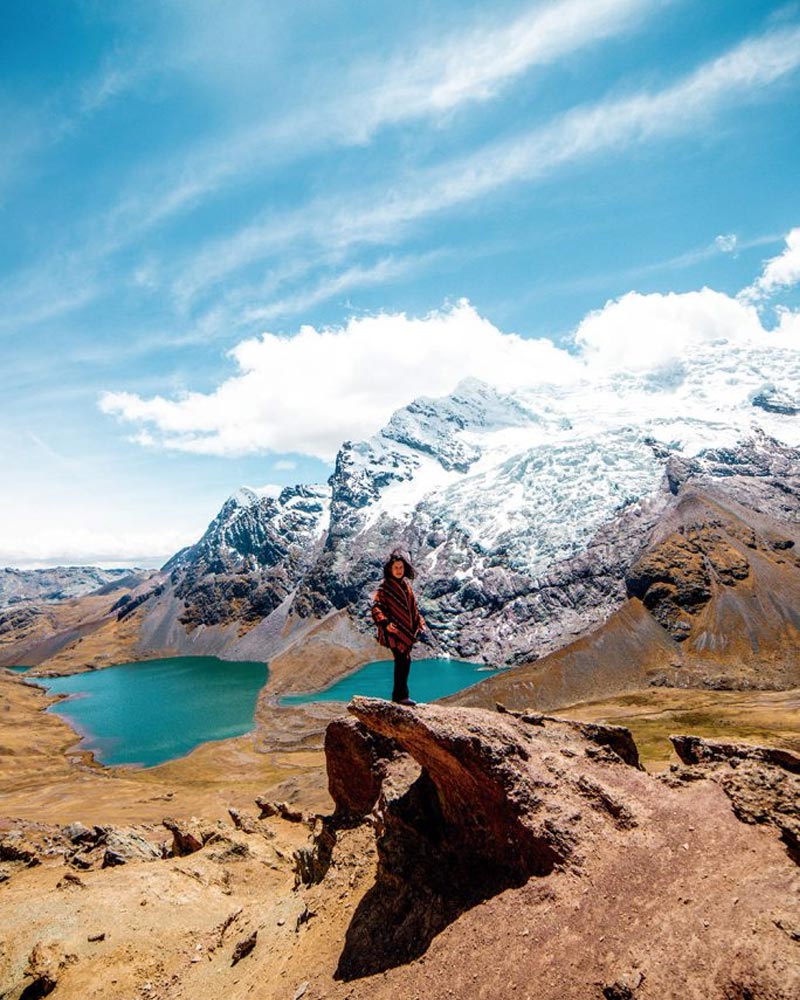
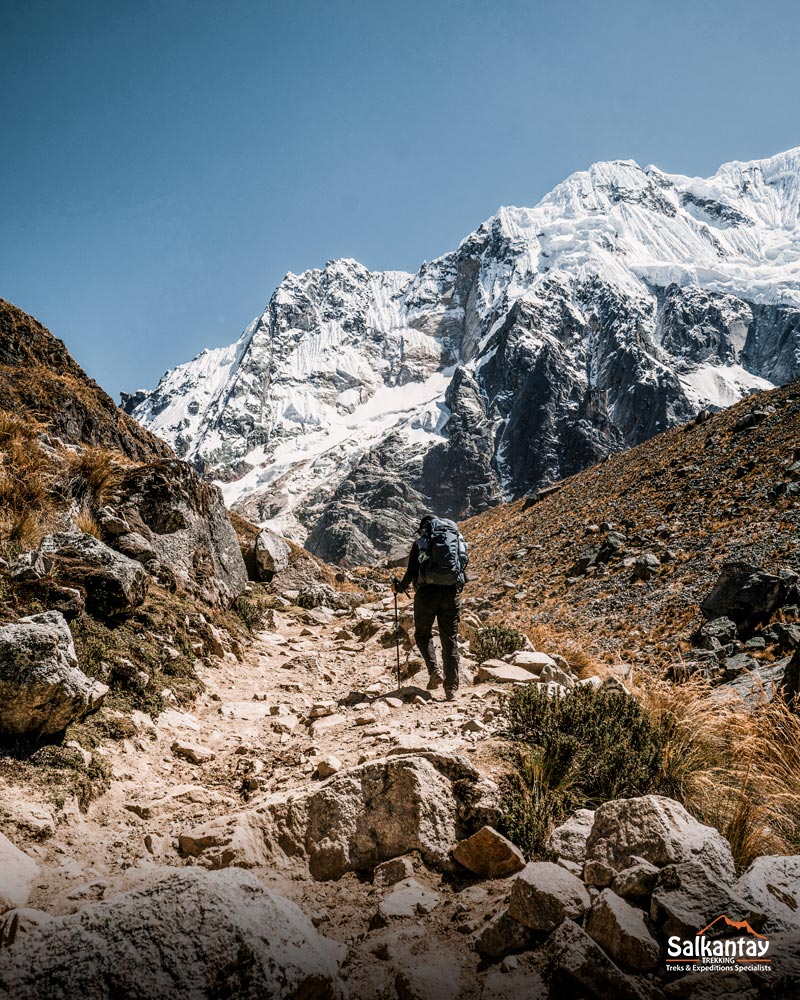
Now that you know how important it is to plan your activities in order of difficulty, you may be wondering: where do I start? As we mentioned, Cusco has thousands of things to do and activities for all tastes. Below, we’ll show you the order you should follow in your tours to enjoy the best of Cusco at an appropriate pace.
Cusco: The Capital of the Incas
The adventure begins in Cusco, the ancient capital of the Inca Empire. This city is also known as “the belly button of the world,” and for good reason: it’s the starting point for some of the most important destinations in Peru. Cusco is surrounded by beautiful landscapes and monuments in every direction, but before venturing out to explore them, it’s important to acclimate to the climate and altitude.
That’s why it’s best to dedicate the first two days to light activities within the city. This will not only help you adjust to the altitude, but also allow you to get a feel for the environment, getting to know the surroundings better and connecting with the history of Cusco so you can understand and appreciate the places you’ll visit in the following days.
Walking Tour
A Cusco walking tour is the best way to start familiarizing yourself with the city. You’ll stroll through its historic center, its churches, the most iconic neighborhoods and streets, and local markets, where you can experience the lifestyle of the people of Cusco and start to orient yourself to move around with confidence during your stay.
- In the Plaza de Armas and the Qoricancha (Temple of the Sun), you will learn about the history of Cusco, from the Inca Empire to the arrival of the Spanish, while admiring the architecture that blends two cultures.
- At the San Pedro Market, you will discover local crafts, colorful textiles, ceramics, products like cacao and coffee, and you’ll have the chance to taste typical regional flavors.
- The San Blas neighborhood will charm you with its cobblestone streets, white houses, cafés, artisan workshops, and a viewpoint offering a spectacular view of the entire city.
This tour is also a great opportunity to explore restaurants and cafés you may want to try during the next days of your trip.
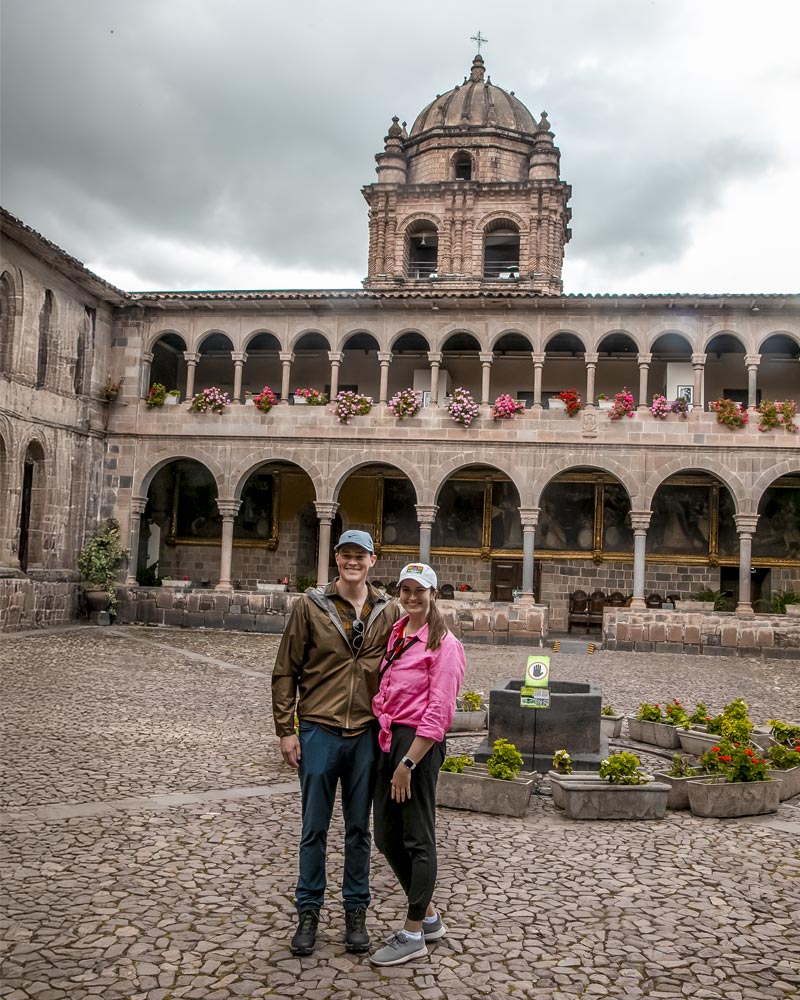
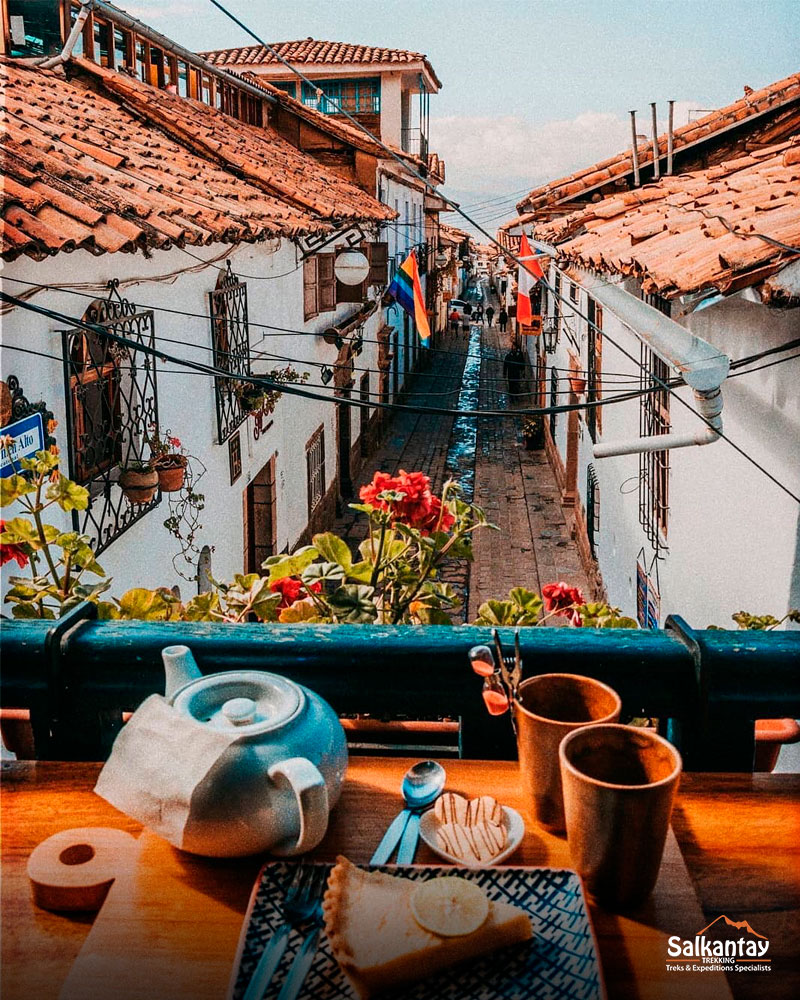
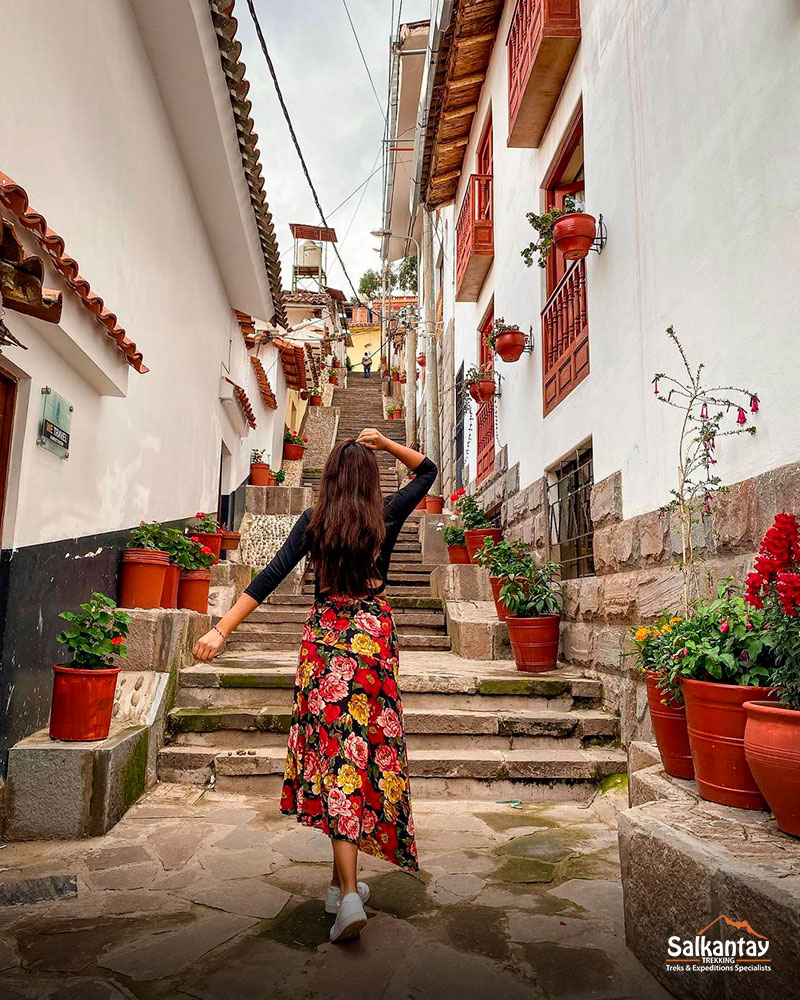
City tour
This tour of the most symbolic Inca temples in Cusco will help you better understand the history and legacy of this Empire. At these sites, you’ll be able to appreciate the impressive Inca architecture, learn about their rituals and customs, and understand how these places continue to shape Cusco’s cultural identity today.
You will visit sites such as:
- Sacsayhuamán: The colossal fortress with giant stones.
- Qenqo: An enigmatic ceremonial center shaped like a labyrinth.
- Puka Pukara: A large military base that served as a control post.
- Tambomachay: The “Temple of Water,” known for its hydraulic channels that still function perfectly.
Very close to this area is the South American Camelid and Textile Interpretation Center, where you can observe closely the iconic animals of Peru: the llama, alpaca, vicuña, and guanaco.
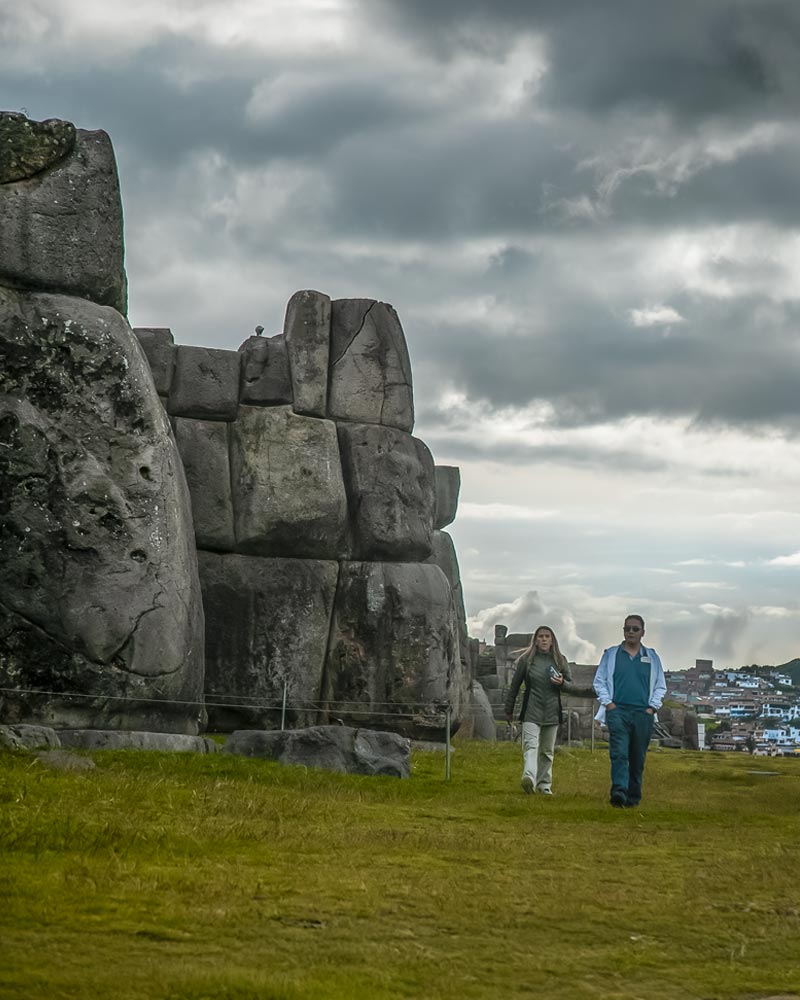
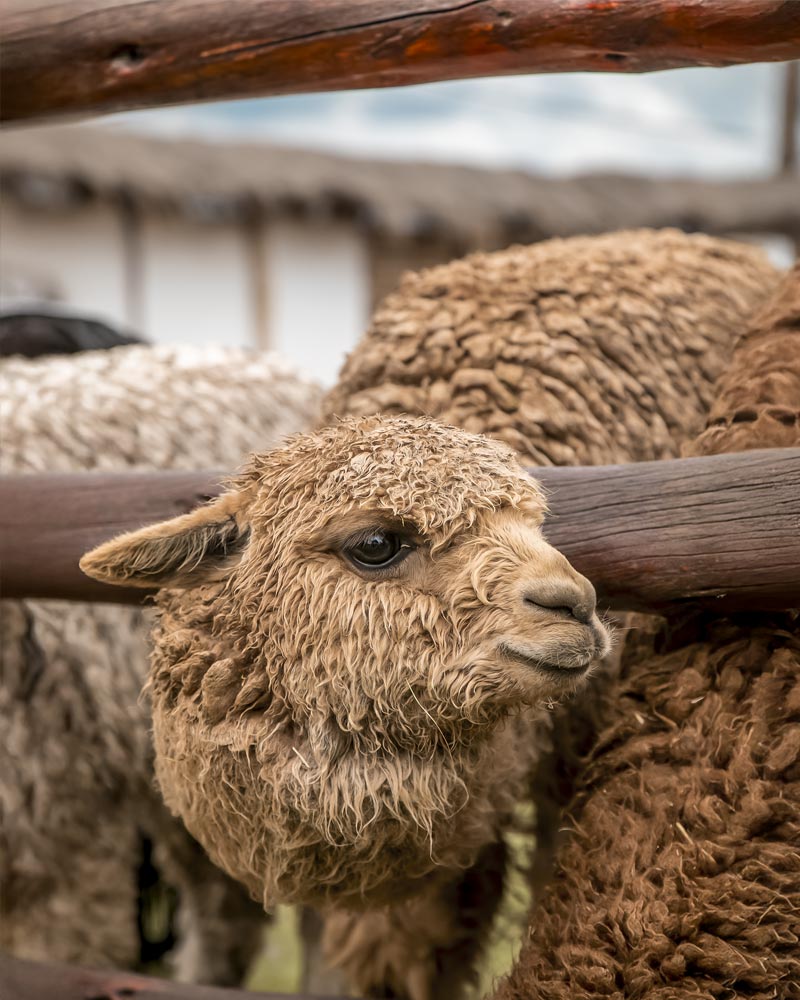
Sacred Valley of the Incas: The Legacy of an Empire
The Sacred Valley of the Incas is an Andean region located near Cusco, stretching along the Urubamba River. It is situated at around 2,800 meters (9,186 feet) of altitude, lower than the city of Cusco. This makes it a great place to continue your acclimatization or even to start your altitude adaptation process.
This valley was crucial for the Inca Empire due to its fertile lands, where vast agricultural terraces and sophisticated farming systems were built. Today, visitors can explore large archaeological complexes and charming traditional villages, surrounded by a warmer climate and spectacular landscapes of rivers, mountains, and fields.
Access all the monuments of Cusco with a single ticket: An interesting option is to purchase the Cusco tourist ticket, a unique pass that allows you to access the main tourist attractions of the city of Cusco and its surroundings, including some archaeological sites in the Sacred Valley of the Incas.
Some of the most beautiful villages are:
- Pisac: Famous for its artisan market and ruins perched atop the mountain.
- Chinchero: Known for its textile workshops and vibrant traditions.
- Urubamba: The agricultural heart of the valley, with large corn plantations.
- Maras and Moray: Popular for their salt mines and mysterious circular terraces.
- Ollantaytambo: A living Inca city, with impressive fortresses and original cobblestone streets.
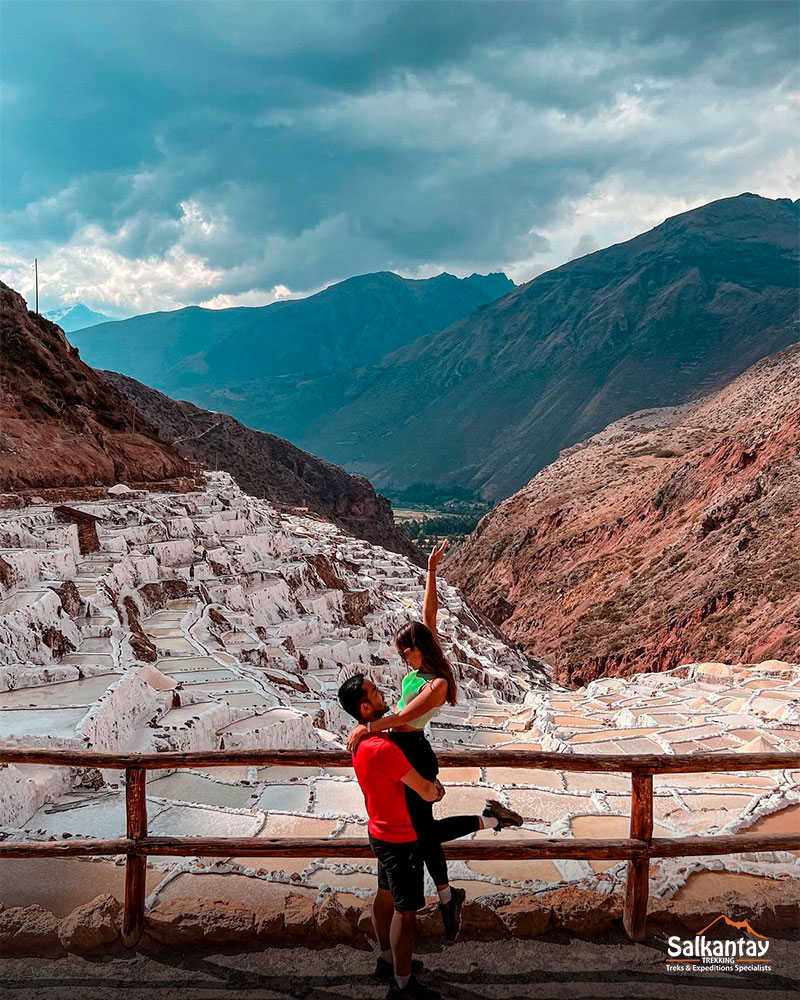
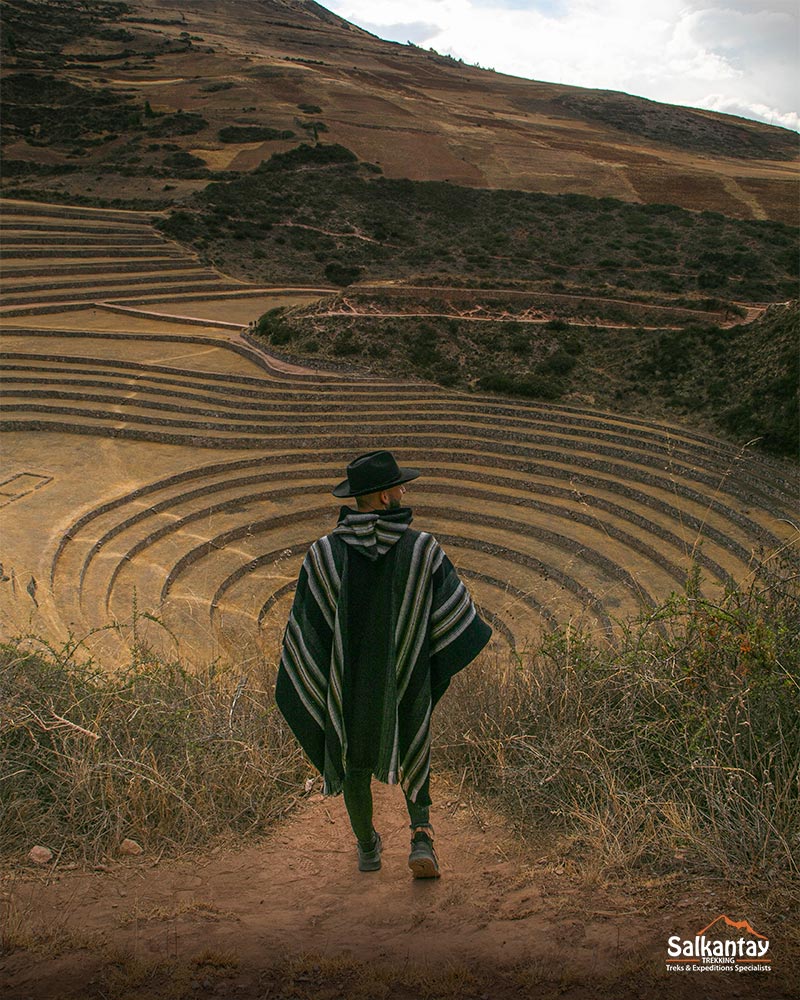
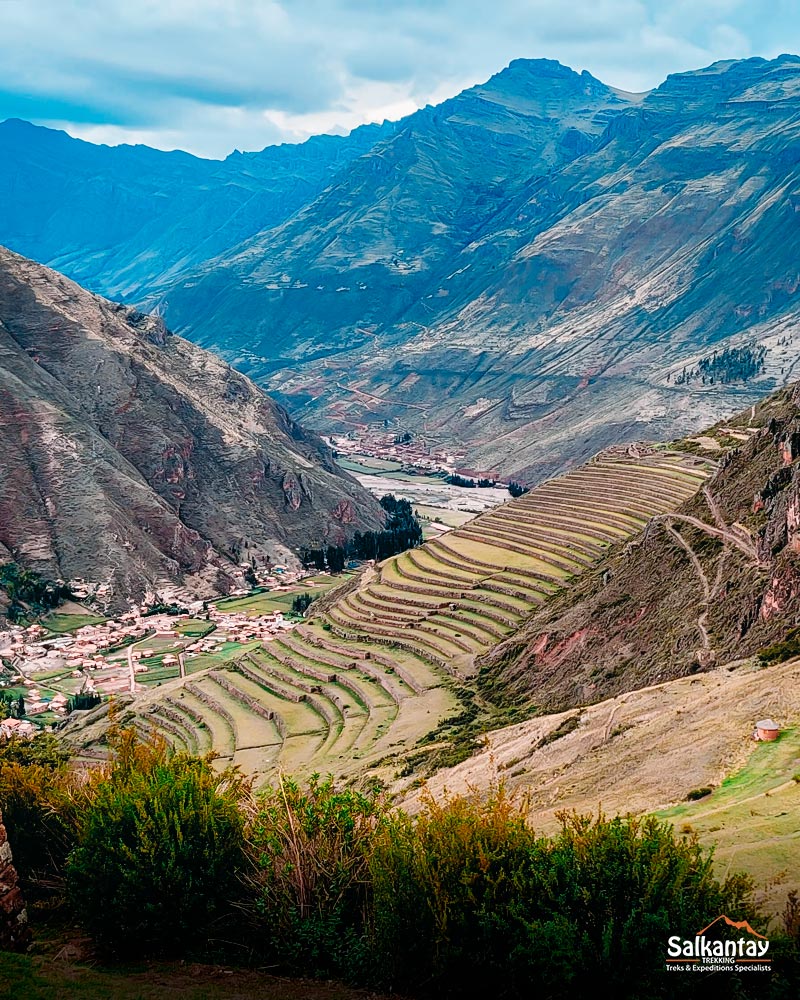
Visit Machu Picchu Without Major Hikes
If you want a more relaxed experience at the Inca citadel, you can reach Machu Picchu by train from the Sacred Valley, without the need for long hikes or demanding treks.
Most services depart from Ollantaytambo, with frequent schedules and various options. The train ride takes approximately 1 hour and 30 minutes and will bring you to Aguas Calientes (also called Machu Picchu Pueblo), the town located at the foot of Machu Picchu. From Aguas Calientes, you will need to take a bus that takes about 25–30 minutes to reach the entrance of the citadel.
It’s important to book both your train tickets and entrance tickets to the fortress and the bus in advance, as demand is usually high, especially during peak season (May to September).
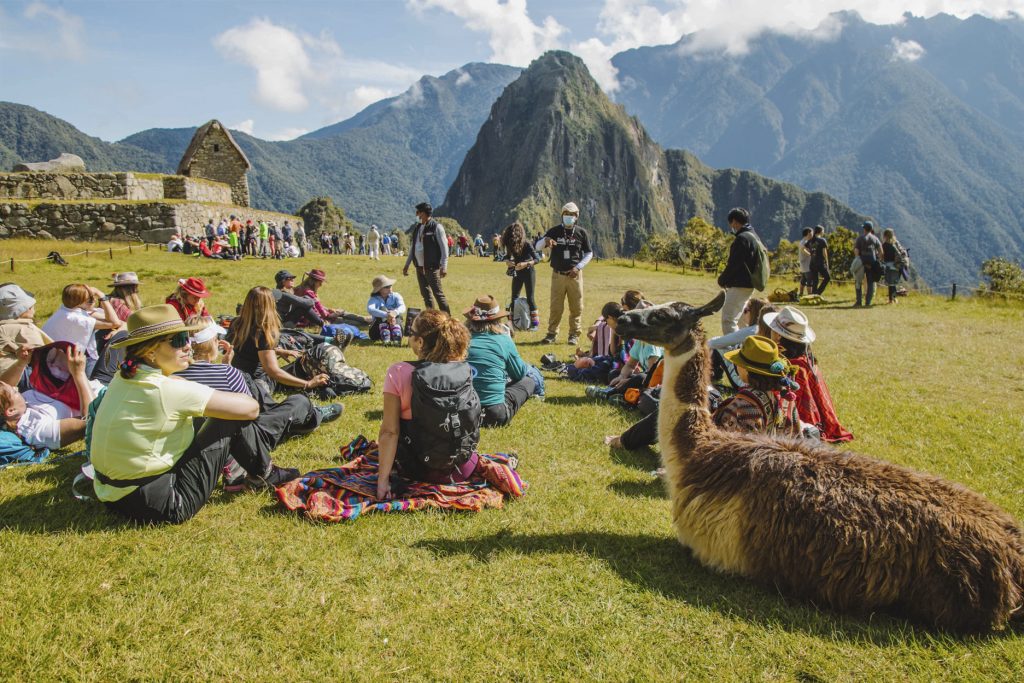
Day Hikes in Cusco
Whether you want to enjoy the incredible landscapes of the Andes or are looking to physically prepare for a multi-day trek, day hikes in Cusco are a perfect option. These routes allow you to immerse yourself in the region’s beauty without demanding too much of your time or energy—ideal for acclimatizing and enjoying nature.
Here we present the best day hikes, ordered from easiest to most challenging:
- Q’eswachaka: The last Inca suspension bridge made from the plant fiber of the ichu grass, which is rebuilt every year in an ancestral ceremony. This route is short and simple. The journey to the bridge is by car, and once there you only need to cross it. It is ideal for experiencing a marvel of Inca engineering and connecting with Quechua traditions without great effort.
- Altitude: 3,700 m / 12,139 ft
- Distance: Maximum 1 km (descend to the bridge, cross it, and climb back up)
- Duration: 20–30 minutes at the site
- Level of difficulty: Easy
- Palccoyo: A short and gentle route to see 3 beautiful rainbow mountains and an impressive forest of giant stone formations. It is much less crowded than Vinicunca (the classic and famous Rainbow Mountain) and perfect if you want to avoid the effort of high-altitude trekking. Ideal for families or relaxed travelers.
- Altitude: 4,900 m / 16,076 ft
- Distance: 3–4 km (round trip)
- Duration: 1–2 hours of hiking
- Level of difficulty: Easy – Moderate
- Huchuy Qosqo: A moderate route to the archaeological site of Huchuy Qosqo, combining history and spectacular views of the Sacred Valley. A good option for those seeking an accessible challenge close to the city of Cusco.
- Altitude: 3,600 m / 11,811 ft
- Distance: 10–12 km (round trip)
- Duration: 4–6 hours
- Level of difficulty: Moderate
- Humantay Lake: A moderate hike to an impressive turquoise lagoon at the foot of Mount Humantay. Although the ascent is short, it is quite steep and can feel heavy due to the altitude. It is recommended to be well acclimatized before doing this hike. The effort is fully rewarded by the spectacular views.
- Altitude: 4,200 m / 13,780 ft
- Distance: 7 km (round trip)
- Duration: 3–4 hours
- Level of difficulty: Moderate
- Waqrapukara: This moderate hike to the Inca fortress of Waqrapukara requires some endurance due to the long distance. The trail takes you through landscapes of canyons, mountains, and rock formations, leading to this impressive structure hanging over an abyss.
- Altitude: 4,300 m / 14,100 ft
- Distance: 8-15 km (depending on the chosen route)
- Duration: 4-6 hours
- Difficulty level: Moderate – Challenging
- Pallay Punchu: A one-day hike at high altitude to a lesser-known rainbow mountain, featuring spectacular multicolored rock formations. While the hike is not very long or steep, the mountain is located at a high altitude, so it is recommended for travelers who already have good acclimatization.
- Altitude: 4,700 m / 15,420 ft
- Distance: 12 km (round trip)
- Duration: 3 hours
- Difficulty level: Moderate – Challenging
REMEMBER: The Humantay Lake is included in the Salkantay Trek. You can also choose the 2-day option with the ascent to the Salkantay Pass.
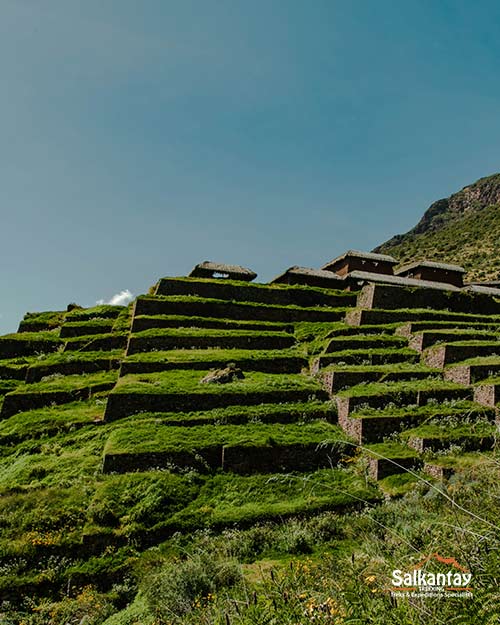
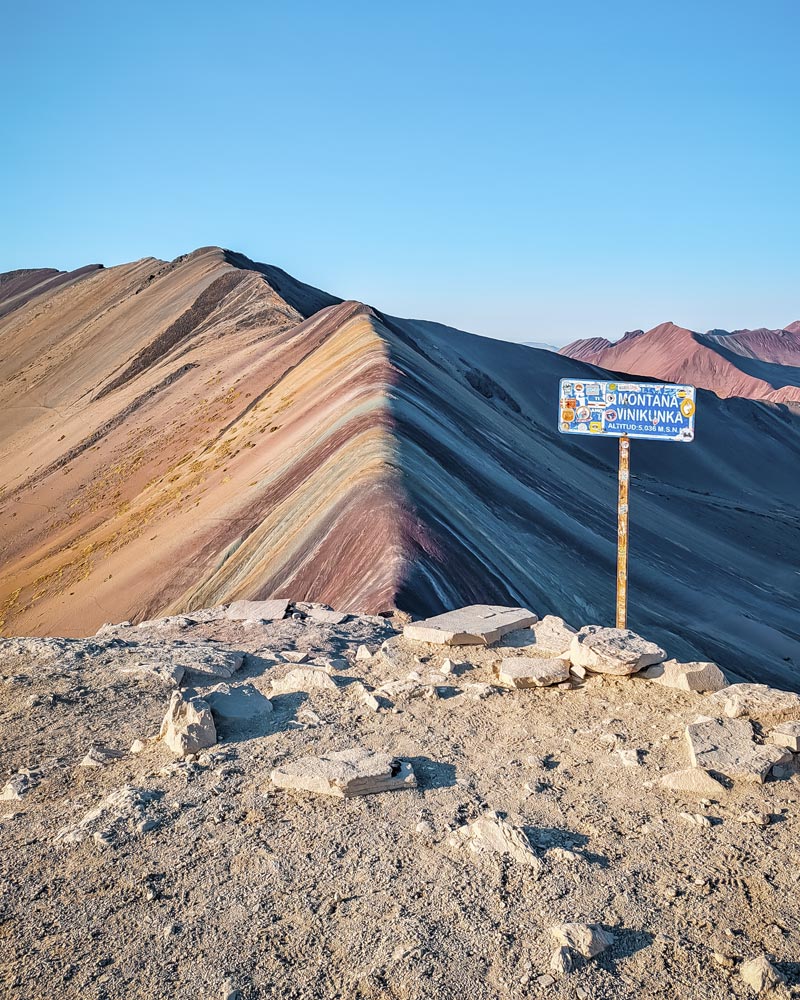
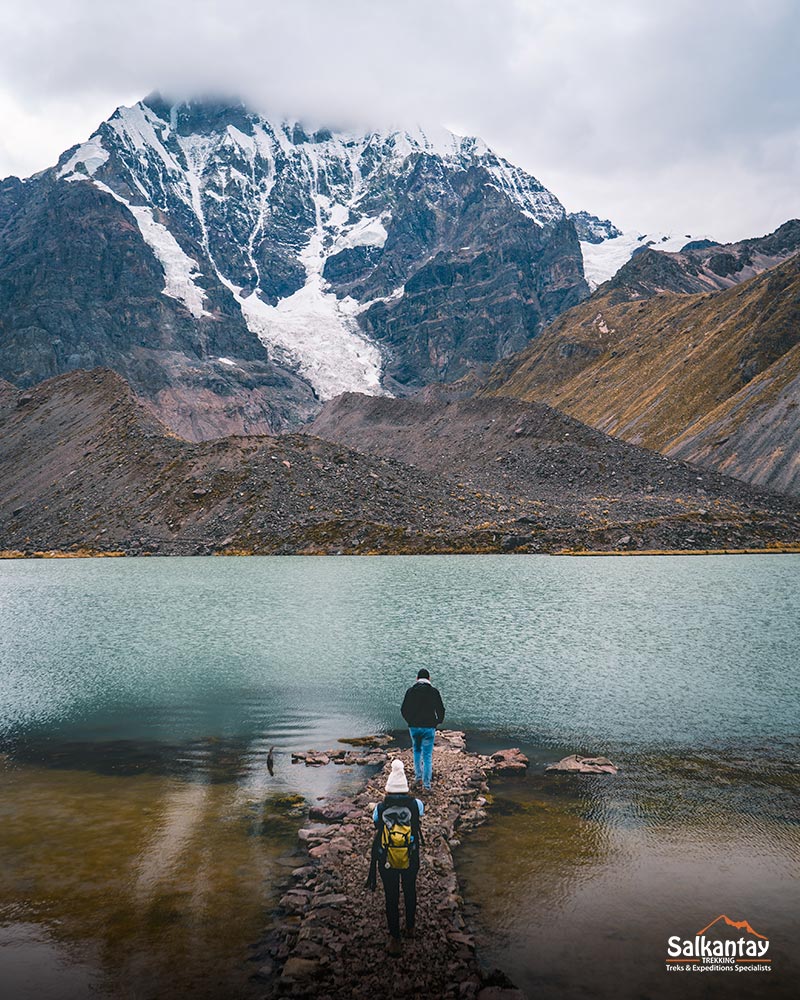
Multi-day treks: the full adventure
Once you are fully acclimated to the mountain altitude and your body is ready to handle long hikes, you can embark on one of the multi-day treks. These routes involve full days of hiking, where you’ll walk for several hours each day, resting at night before continuing the adventure the next day. Cusco offers spectacular trekking experiences, many of which end at Machu Picchu, making the journey even more special.
Here are the best treks in Cusco, listed from easiest to most challenging:
- Huchuy Qosqo: Apart from the one-day hike, you can also do this 3-day route. It’s a relatively easy trek that combines spectacular Andean landscapes with the Huchuy Qosqo archaeological site and ends at Machu Picchu. Ideal for those looking for a short trekking experience and a way to reach the great Inca citadel without major physical strain.
- Maximum Altitude: 4,200 m / 13,780 ft (Apacheta Pass)
- Duration: 3 days
- Difficulty level: Moderate
- Inca Jungle: Pure adrenaline! This route combines hiking with biking, rafting, and ziplining through the mountains and jungle of Cusco. Although it doesn’t require long hikes, it does involve some physical challenges and adventure sports, making it ideal for those seeking intense experiences and who love adrenaline. It’s recommended to have a minimum level of fitness and be ready for action-packed moments.
- Maximum Altitude: 4,350 m / 14,272 ft (Málaga Pass)
- Duration: 4 days
- Difficulty level: Moderate to Challenging (Due to the type of activities)
- Inca Quarry: This lesser-known route will take you to the places where the Incas quarried and worked the huge stones used for their constructions. A moderate-difficulty trek through spectacular landscapes that ends at the Incas’ greatest creation: Machu Picchu.
- Maximum Altitude: 4,500 m / 14,764 ft (Kuichiqasa Pass)
- Duration: 4 days
- Difficulty level: Moderate to Challenging
- Lares Trek: A route that combines nature and culture. You’ll discover hot springs, waterfalls, and local communities where you can observe daily life in the highlands. The trek lasts 4 days and is moderately difficult, especially during the first stages, which have steep inclines.
- Maximum Altitude: 4,700 m / 15,420 ft (Pachacútec Pass)
- Duration: 4 days
- Difficulty level: Moderate to Challenging
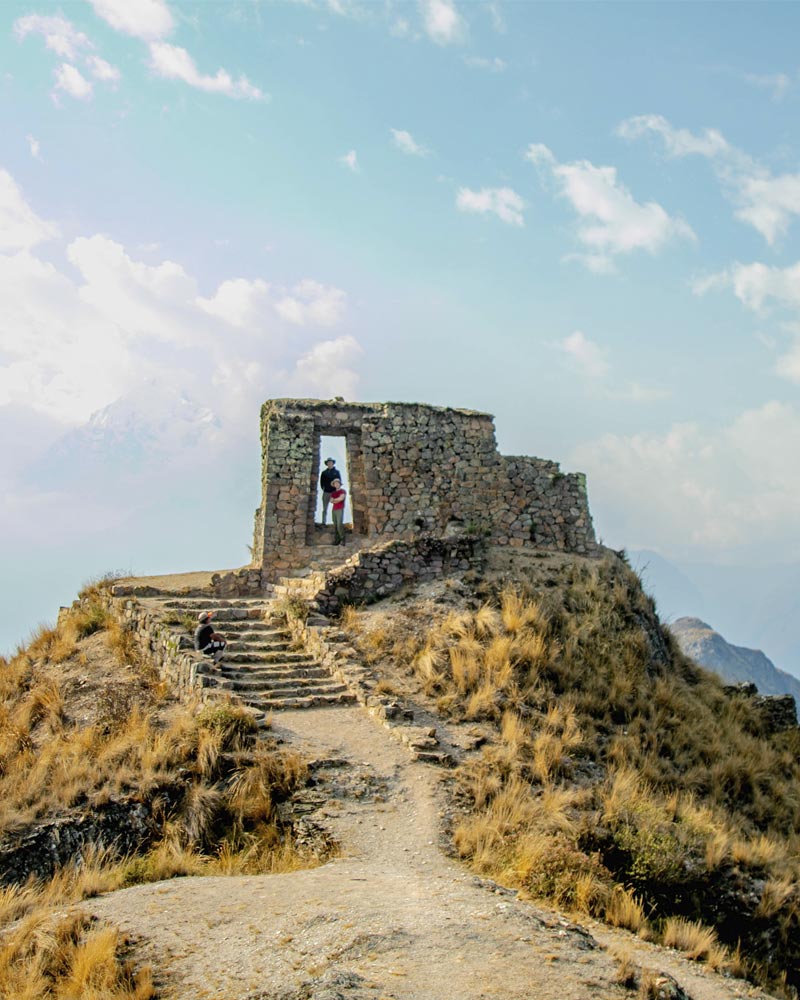

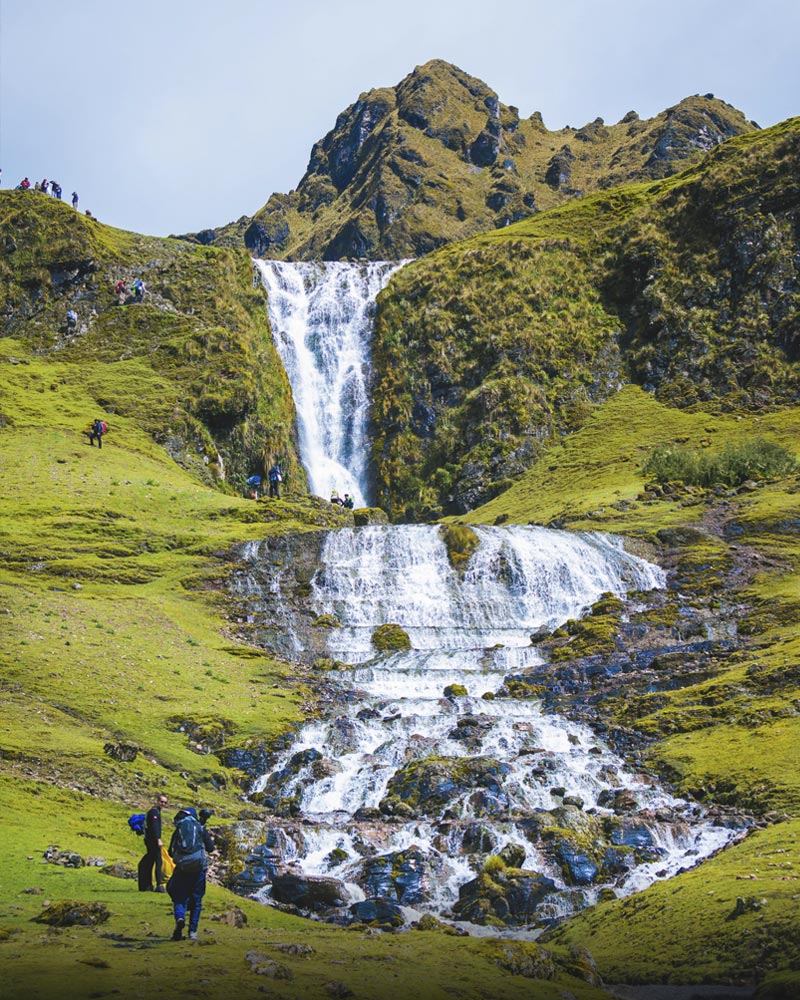
- Ancascocha Trek: Known as one of the most beautiful and quiet trails, it offers views of snow-capped peaks, stunning lakes, and remote archaeological sites. The route passes through secluded areas, ideal for those seeking more solitude in the mountains. The high mountain passes and the trek’s length (5 days) will challenge you, but every effort is worth it when you reach natural viewpoints with unbeatable views of the Andes.
- Maximum Altitude: 4,650 m / 15,256 ft (Huayanay Pass)
- Duration: 5 days
- Difficulty level: Moderate to Challenging
- Salkantay Trek: Salkantay Trek: One of the most famous routes to Machu Picchu, known for its spectacular landscapes: Humantay Lake, the impressive Salkantay Pass, and the majestic Inca citadel. Over 5 days, you’ll cross diverse terrain, from the cold highlands to Cusco’s lush jungle. Although it’s accessible to many travelers, good physical endurance is required due to altitude changes and the long distances between key points along the route.
- Maximum Altitude: 4,630 m / 15,190 ft (Salkantay Pass)
- Duration: 5 days
- Difficulty level: Moderate to Challenging
One route, countless options: The Salkantay Trek has different variations depending on how much time you have in Cusco. You can choose between the 2-day, 4-day, or 5-day trek.
- Inca Trail: The most iconic trek in Cusco due to its great cultural, historical, and scenic importance. You will walk along ancient Inca trails, crossing stunning Andean landscapes, cloud forests, and archaeological ruins hidden in nature. It is a challenging trek, as during the 4 days of hiking you will encounter several steep ascents and sections of stairs. Reaching Machu Picchu by following in the footsteps of the Incas is not easy, but it’s worth every effort.
- Maximum Altitude: 4,215 m / 13,829 ft (Warmiwañusca Pass)
- Duration: 4 days
- Difficulty Level: Challenging (Due to steep ascents and stairs)
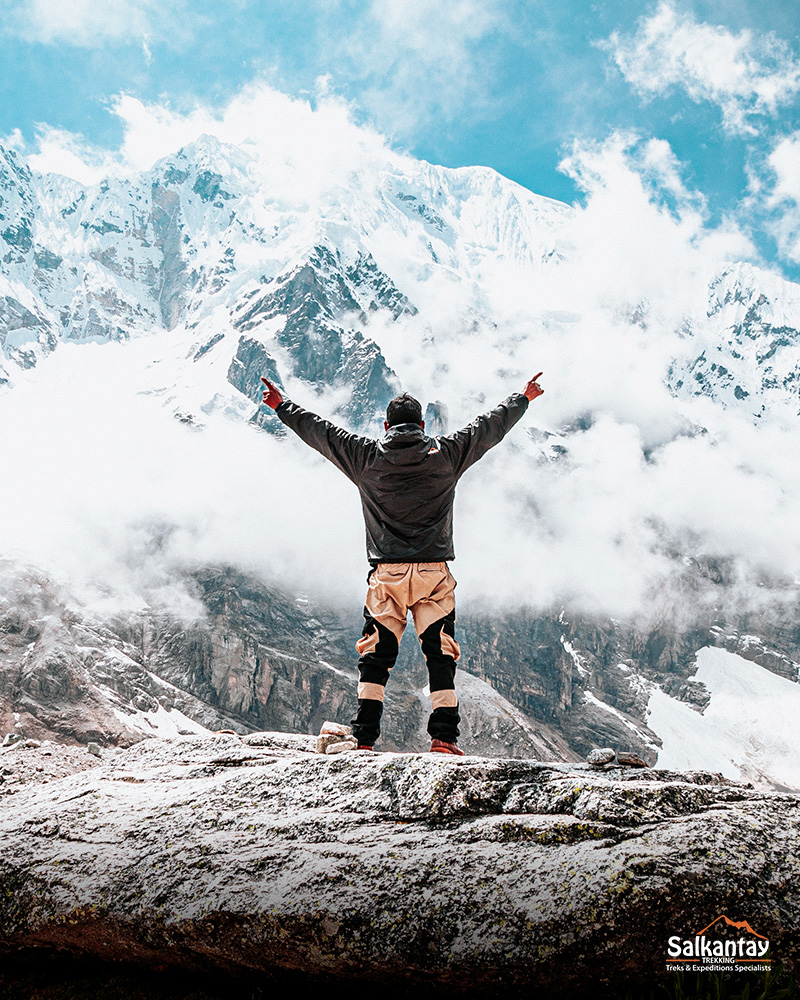
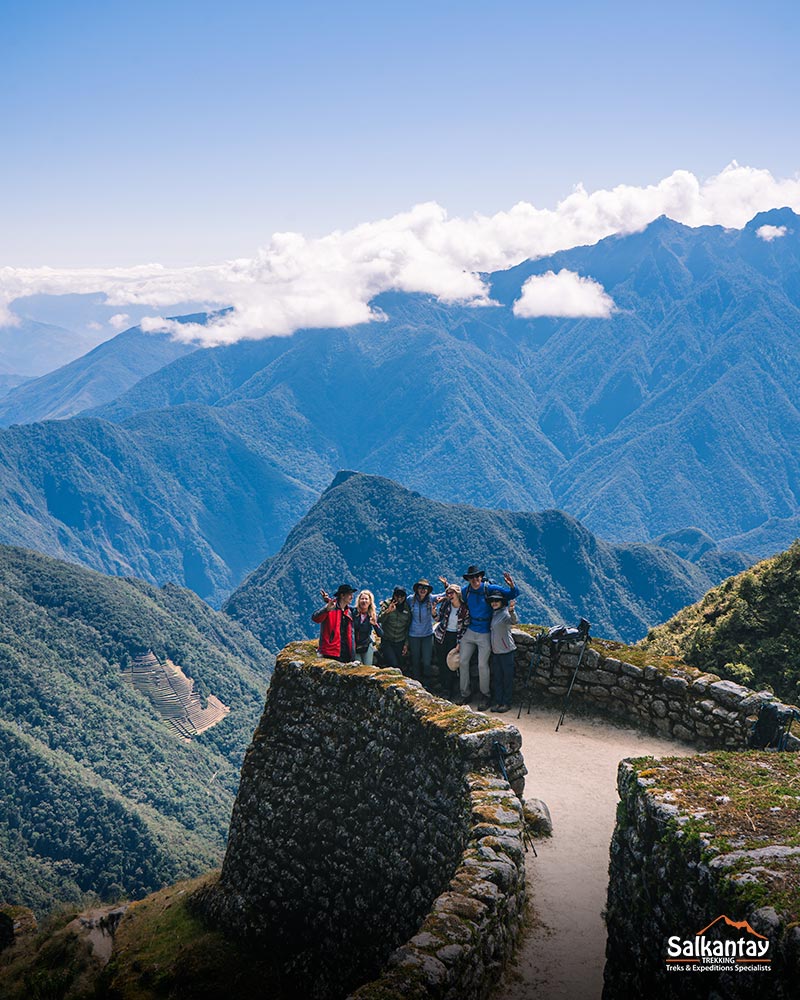
Challenging Routes
Are you looking to take your adventure to the next level? Cusco offers trekking routes that stand out for their challenge, whether it’s due to altitude, the toughness of the terrain or the distance. These hikes are ideal for travelers with good physical preparation and hiking experience, and it is essential to undertake them only once you are fully acclimated and prepared for prolonged effort.
Looking for a tour that has it all? Discover the Andean Explorer tour from Salkantay Trekking. Over 9 days, you’ll experience a unique journey through the best of Cusco: the Sacred Valley of the Incas, the famous Salkantay route, the Machu Picchu citadel, and the stunning Rainbow Mountain. The most iconic destinations gathered in one adventure!
Next, we’ll tell you which are the most challenging routes and what you need to keep in mind before setting off.
- Vinicunca: One-day hike to the famous Rainbow Mountain, known for its intense colors. The hike is quite challenging due to the extreme altitude and the steep incline in the final stretch. Good acclimatization is required, as altitude sickness is possible in this environment.
- Altitude: 5,200 m / 17,060 ft
- Distance: 10 km (round trip)
- Duration: 4 hours
- Difficulty level: Challenging (Due to the altitude)
- Ausangate Seven Lakes: A challenging but spectacular hike, offering views of massive glaciers and turquoise lagoons. The high altitude and long trail make it tough, but not impossible if you are well acclimatized and have basic trekking experience. It’s ideal for those looking for a challenge off the beaten path.
- Altitude: 4,700 m / 15,420 ft
- Distance: 15 km (round trip)
- Duration: 6–7 hours
- Difficulty level: Challenging (Due to the long route)
- Ausangate Trek: This 5-day trek doesn’t end at Machu Picchu, but it takes you to the majestic Ausangate Mountain (6,384 meters / 20,945 feet), the highest peak in Cusco and considered sacred. You’ll hike through spectacular landscapes of snowy peaks, turquoise lagoons, and remote Andean communities. The trail rises above 5,000 meters (16,400 feet), and while there are no extreme slopes, it’s demanding and recommended for hikers with strong endurance and proper acclimatization.
- Max Altitude: 5,200 m / 17,060 ft (Arapa Pass)
- Duration: 5 days
- Difficulty level: Challenging (Due to the altitude and long distance)
- Camino Choquequirao: Get ready for a true challenge. Since it is an extensive trek with steep ascents and descents, it is a demanding route, recommended for experienced hikers looking for a real physical challenge. However, the reward is enormous: reaching Choquequirao, an impressive archaeological complex much less visited than Machu Picchu, surrounded by nature. This route requires optimal physical condition to endure long walks in rugged terrain.
- Maximum Altitude: 3,050 m / 10,007 ft (Choquequirao)
- Duration: 5 days
- Difficulty Level: Challenging – Formidable (Due to the long route and altitude)
Unique adventures that will put you to the test
Salkantay Trekking offers special itineraries that combine some of the most impressive routes in the Andes to provide you with a unique experience. What do they have in common? They are all long-duration treks with a high level of difficulty.
Are you brave enough to take on the challenge?
- Inca Trail + Salkantay
The two most popular routes to reach Machu Picchu have joined forces so you don’t miss a thing. The route crosses diverse landscapes, traveling through ancient cobblestone paths and archaeological sites hidden in the Andean jungle. It culminates with the entrance to Machu Picchu through the iconic Sun Gate. A complete experience for those seeking adventure, nature, and history in one journey.- Maximum Altitude: 5,100 m / 16,732 feet (Inca Chiriasca Pass)
- Duration: 7 days
- Difficulty Level: Challenging to Formidable (Due to the long distance and changes in altitude and climate)
- Ausangate + Sibinacocha Laggon
This trek circles the imposing Ausangate, the highest and most sacred mountain in Cusco. You will cross high mountain passes, see colorful lakes, and be surrounded by huge glaciers. The route continues to the Sibinacocha Lagoon, one of the highest in the world. This route is ideal for hiking enthusiasts and adventurers seeking a challenge like no other. You must be well acclimatized to the altitude! At nearly 6,000 meters (19,685 feet), altitude sickness can have a significant impact, so take the necessary precautions.- Maximum Altitude: 5,400 m / 17,716 feet (Condor Pass)
- Duration: 7 days
- Difficulty Level: Challenging to Formidable (Due to the great altitude and mountainous terrain)
- Choquequirao + Machu Picchu
Discover the two greatest creations of the Incas: the citadels of Choquequirao and Machu Picchu. Two masterpieces of architecture and engineering connected by an impressive and highly demanding route. The journey starts at Choquequirao, known as the “sacred sister” of Machu Picchu, where you’ll explore vast archaeological areas almost free from tourists. Then, after several days of walking through deep canyons and mountain jungles, you’ll reach Machu Picchu to conclude the adventure.- Maximum Altitude: 5,400 m / 17,716 feet (Condor Pass)
- Duration: 7 days
- Difficulty Level: Formidable (Due to the long distance and terrain)
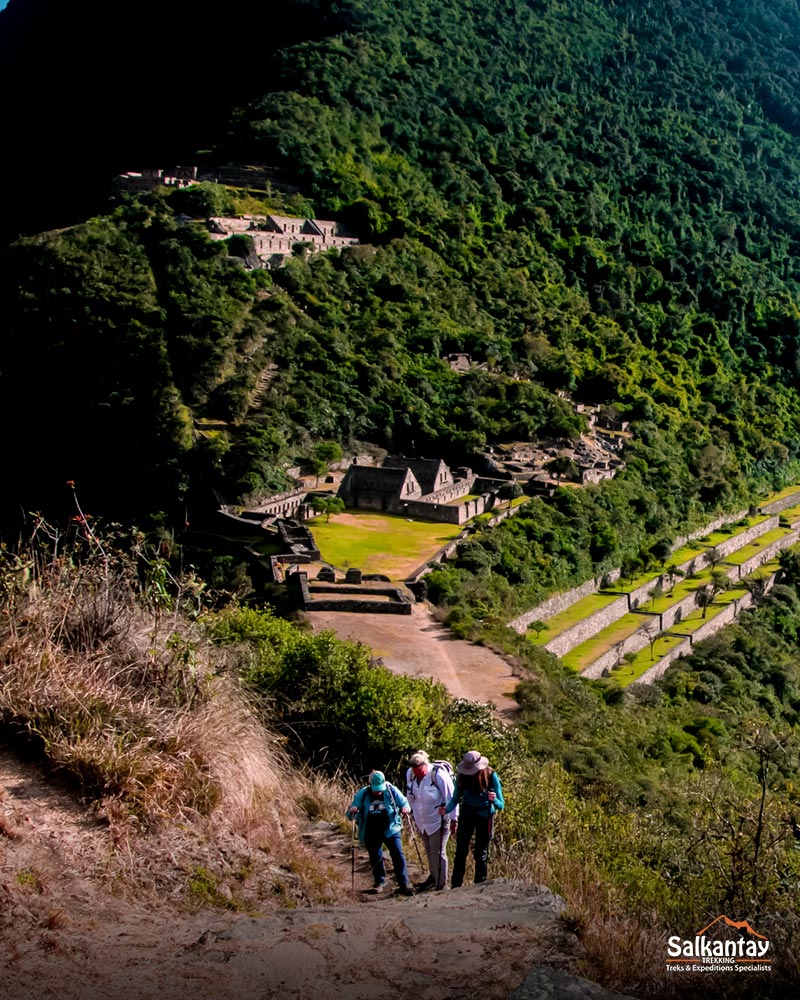
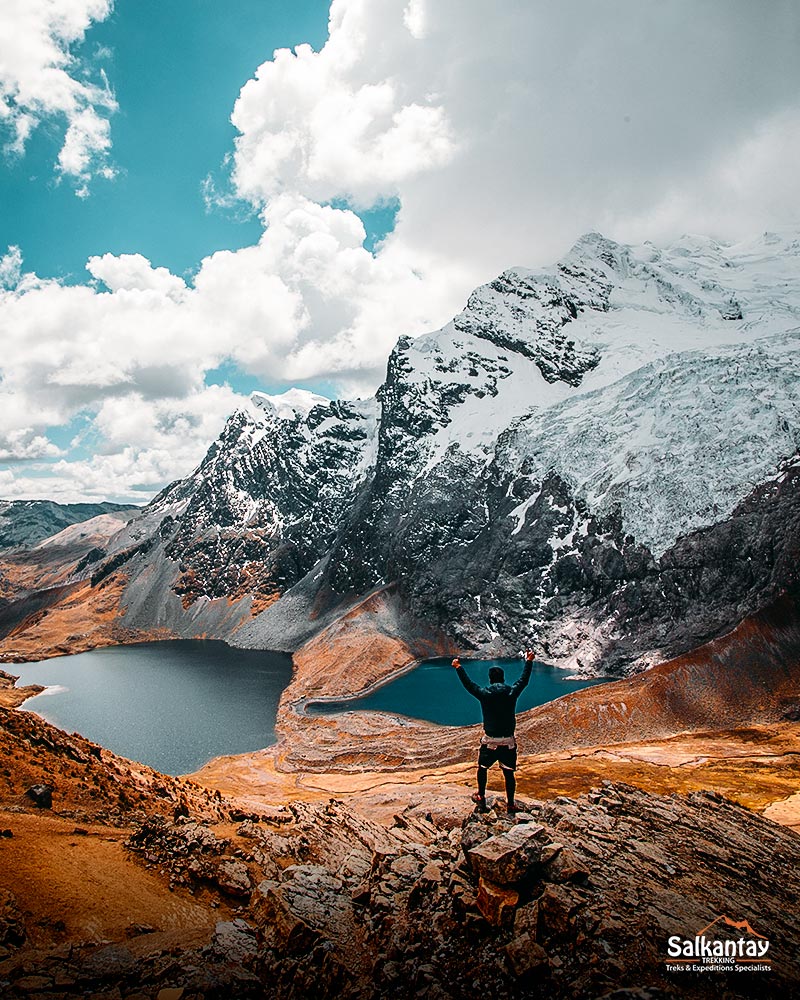
Tips before you go on a trek
- Get Physically Prepared: In addition to acclimatizing to the altitude, it’s recommended to train in advance to build your endurance. Ideally, you should start physical preparation several months before your trip. Combine aerobic exercises with strength routines, focusing especially on the lower body. Strong legs, capable of climbing high steps, withstanding downhill impacts, and enduring long walks, will make a huge difference in your trekking experience.
- Book in advance: Routes to Machu Picchu, especially the Inca Trail and the Salkantay trek, often sell out quickly. We recommend booking 5 or 6 months before your trip to Peru to secure your adventure. Although other alternatives have more availability, tickets to Machu Picchu also sell fast. The best option is to book in advance!
- Bring good gear: Having the right trekking equipment is crucial for your safety and comfort on the trail. Essential items include good trekking poles, a lumbar-supported backpack, waterproof shoes with good traction, a rain jacket, a hat, gloves, and sunscreen. It’s also useful to carry a headlamp, reusable water bottles, and a small personal first aid kit.
- Pack light: You’ll be spending several days in nature, so it’s crucial to keep your backpack as light as possible. At Salkantay Trekking, we transport part of your luggage, but there is a weight limit. Prioritize essentials and choose compact, lightweight items.
Tips for planning your itinerary
- Include rest days between intense activities so you can recover before starting a new adventure.
- Don’t underestimate the altitude. Even if you follow all acclimatization tips, you might still experience some symptoms of altitude sickness. It’s a good idea to bring any necessary medication and consult your doctor in advance.
- Adjust your itinerary based on your fitness level. If you’re not used to long hikes, start with easier tours and gradually increase the difficulty. This way, you’ll enjoy each experience without exhaustion or health risks.
- Book your tours and tickets to major attractions in advance, especially for Machu Picchu. During the high season (April–October), you should reserve at least 4 months ahead.
- Book with a travel agency. At Salkantay Trekking, we have years of experience organizing routes in Cusco. You can trust us to take care of every detail and ensure a worry-free trip.
You Might Be Interested In
- How to Acclimate in Cusco: Everything You Need to Know
- Cusco Tourist Ticket: What is it? And What is it For? | Complete Guide
- Sacred Valley of the Incas: The mountains are calling you!
- Hiking in Cusco: Short Routes to Conquer in Less than a Day
- The 7 Best Treks to Machu Picchu
- Adventure at Altitude! How to Train to Fully Enjoy Trekking in Peru
- Top Things to Do in Cusco, Peru
- Alternatives to the Inca Trail and Salkantay: Other Routes to Machu Picchu

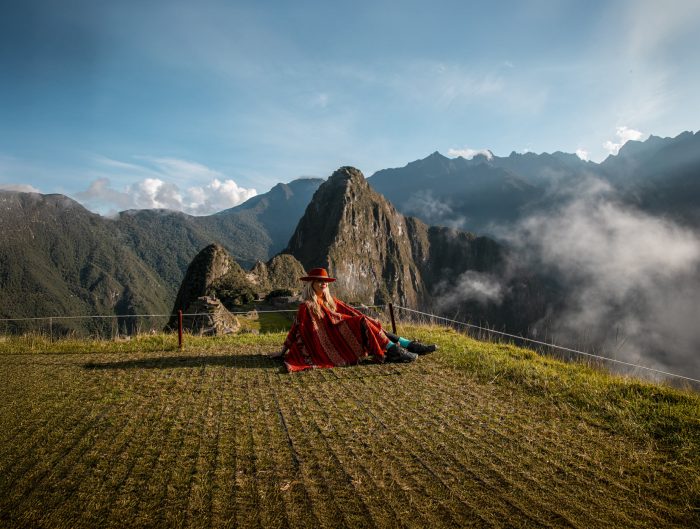

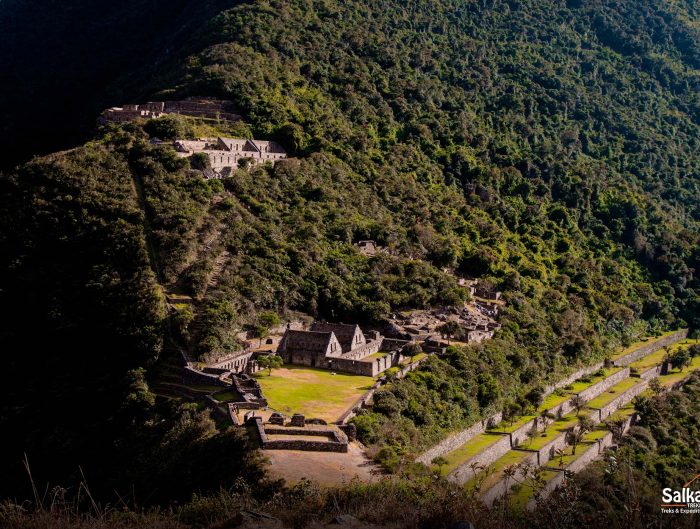
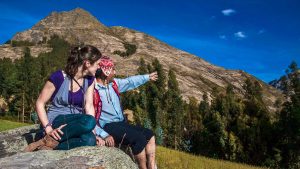
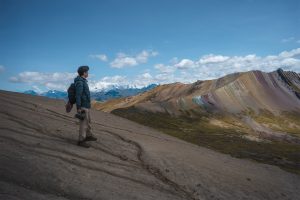
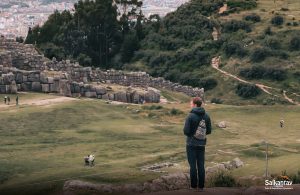
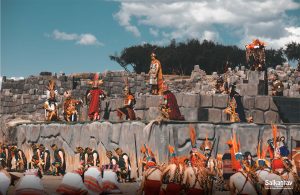
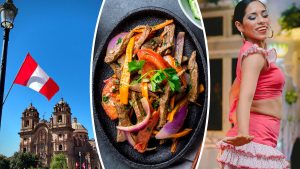
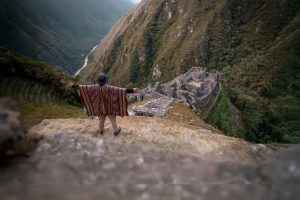
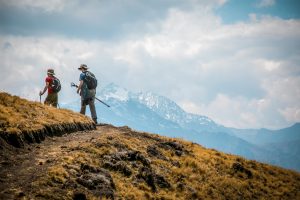
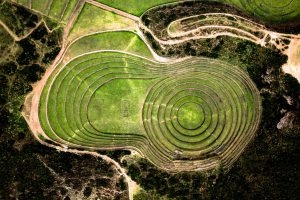


Leave A Reply